#water shortage
Text
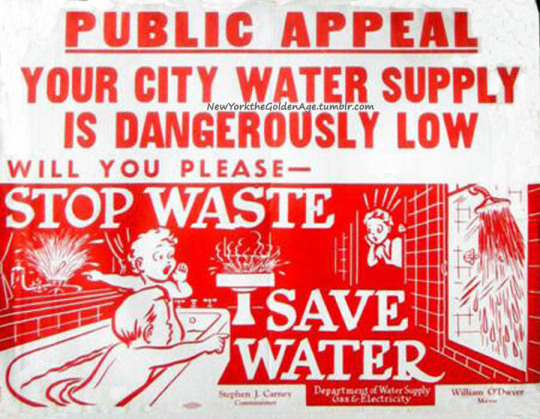
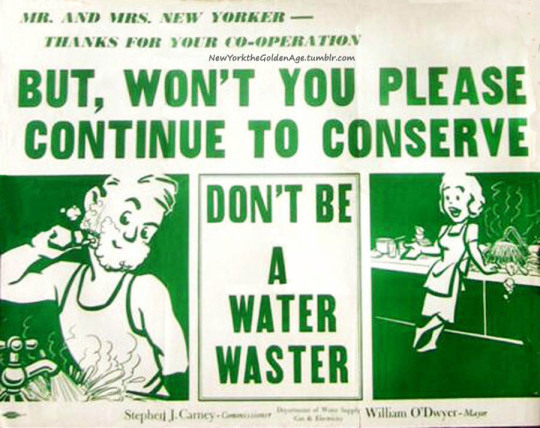
The city suffered a serious water shortage in 1949-50. These are two appeals from the Subway Sun (a "newspaper" that appeared above the seats in subway cars, along with ads) to encourage New Yorkers to conserve water. The illustrator was Amelia Opdyke Jones, who signed her work "Oppy."
Photos: wnyc archives/ wnyc.org
#vintage New York#1940s#1950s#Oppy#Amelia Opdyke Jones#Subway Sun#NYC subway#vintage ads#water shortage
52 notes
·
View notes
Text
Scientists have developed a new solar-powered system to convert saltwater into fresh drinking water which they say could help reduce dangerous the risk of waterborne diseases like cholera.
Via tests in rural communities, they showed that the process is more than 20% cheaper than traditional methods and can be deployed in rural locations around the globe.
Building on existing processes that convert saline groundwater to freshwater, the researchers from King’s College London, in collaboration with MIT and the Helmholtz Institute for Renewable Energy Systems, created a new system that produced consistent levels of water using solar power, and reported it in a paper published recently in Nature Water.
It works through a process called electrodialysis which separates the salt using a set of specialized membranes that channel salt ions into a stream of brine, leaving the water fresh and drinkable. By flexibly adjusting the voltage and the rate at which salt water flowed through the system, the researchers developed a system that adjusts to variable sunshine while not compromising on the amount of fresh drinking water produced.
Using data first gathered in the village of Chelleru near Hyderabad in India, and then recreating these conditions of the village in New Mexico, the team successfully converted up to 10 cubic meters, or several bathtubs worth of fresh drinking water. This was enough for 3,000 people a day with the process continuing to run regardless of variable solar power caused by cloud coverage and rain.
[Note: Not sure what metric they're using to calculate daily water needs here. Presumably this is drinking water only.]
Dr. Wei He from the Department of Engineering at King’s College London believes the new technology could bring massive benefits to rural communities, not only increasing the supply of drinking water but also bringing health benefits.
“By offering a cheap, eco-friendly alternative that can be operated off the grid, our technology enables communities to tap into alternative water sources (such as deep aquifers or saline water) to address water scarcity and contamination in traditional water supplies,” said He.
“This technology can expand water sources available to communities beyond traditional ones and by providing water from uncontaminated saline sources, may help combat water scarcity or unexpected emergencies when conventional water supplies are disrupted, for example like the recent cholera outbreaks in Zambia.”
In the global rural population, 1.6 billion people face water scarcity, many of whom are reliant on stressed reserves of groundwater lying beneath the Earth’s surface.
However, worldwide 56% of groundwater is saline and unsuitable for consumption. This issue is particularly prevalent in India, where 60% of the land harbors undrinkable saline water. Consequently, there is a pressing need for efficient desalination methods to create fresh drinking water cheaply, and at scale.
Traditional desalination technology has relied either on costly batteries in off-grid systems or a grid system to supply the energy necessary to remove salt from the water. In developing countries’ rural areas, however, grid infrastructure can be unreliable and is largely reliant on fossil fuels...
“By removing the need for a grid system entirely and cutting reliance on battery tech by 92%, our system can provide reliable access to safe drinking water, entirely emission-free, onsite, and at a discount of roughly 22% to the people who need it compared to traditional methods,” He said.
The system also has the potential to be used outside of developing areas, particularly in agriculture where climate change is leading to unstable reserves of fresh water for irrigation.
The team plans to scale up the availability of the technology across India through collaboration with local partners. Beyond this, a team from MIT also plans to create a start-up to commercialize and fund the technology.
“While the US and UK have more stable, diversified grids than most countries, they still rely on fossil fuels. By removing fossil fuels from the equation for energy-hungry sectors like agriculture, we can help accelerate the transition to Net Zero,” He said.
-via Good News Network, April 2, 2024
#water#water scarcity#clean water#saline#desalination#off grid#battery technology#solar power#solar energy#fossil fuels#water shortage#india#hyderabad#new mexico#united states#uk#united kingdom#good news#hope#aquifers
800 notes
·
View notes
Text
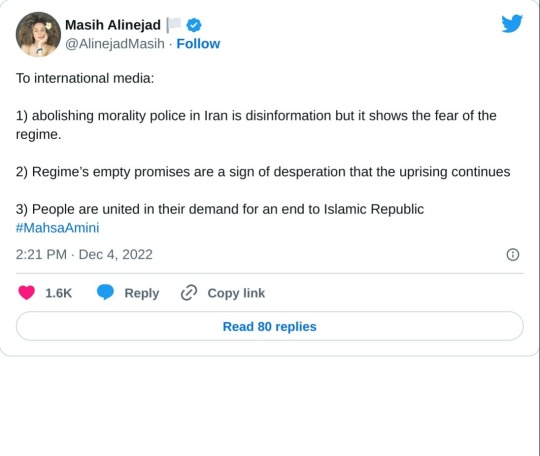
The Islamic Republic: we canceled the morality police!
Iranians: so?! Does that change the fact that you have committed genocide in Kurdish cities and Zahedan? Does that restore people's eyesight that you took from them with your rubble bullets? Does that bring back to life almost 500 murdered protesters in the last 3 months, among them at least 60 children? Does that bring back to life 1500 people you massacred in 2019 and those you executed afterwards? Or the 30000 people you executed in the first decade of your rule? And everyone you've arrested, raped, tortured and executed in between simply because they didn't agree with you? Does that mean current executions are stopped? Does that mean tens of thousands of arrested protesters are free? Does that mean fired or suspended students are back to classes and can get an education? Does that mean the poverty threshold is no longer so absolutely high that even the once above average families are considered absolutely poor? Does that erase 40 years of apartheid? State racism? State misogyny? Inequality? Have you stopped bothering religious minorities and are giving them their basic human rights back? Does that mean there's no more child marriages? Legal rape? Does that mean you no longer kill and torture LGBTQ people? Does that make up for the environmental disaster you've caused in Iran? Water shortage? Bewildering fuel shortage? All the lakes and water bodies that are dry now and the jungles that has been destroyed? Currently northern jungles are on fire, are the trees restored? Does that mean you no longer execute environmental activists because they object your unscientific environment policies? Does that mean all censorships and restrictions are lifted? Does that end your meddling in other countries affairs? Does it mean you're not a bunch of thieves and murderers who know nothing about running a country? Does that make up for all the lives you've destroyed? And most importantly does that bring Mahsa Amini back to life???
It's too late for that. Iranians have been loud and clear. We won't sit down until this regime is completely and irreversibly changed. The whole government system, the constitution, and the people in powers. And those who committed crimes have to be put on trial.
(The morality police have been around under different names for almost the entirety of this regime. This is just a temporary stop. Even if the morality police is disbanded for good, compulsory hijab is still a law and it's illegal to not wear appropriate clothing. Any police force is able to arrest non hijabis since they're doing something illegal, it's not an exclusive morality police duty. Plus the morality police was just enforcing hijab in the streets. What about every governmental and private offices and institutions? They all have to enforce mandatory hijab on both their employees and costumers So this news means literally nothing. West media should research these things better before publishing misleading informations)
I strongly recommend everyone to go to #MahsaAmini in twitter and read iranians tweets. Like, I strongly recommend it. I even put the link to make it easier for you. Just click on it.
#iran revolution#iran protests#help iran#mahsa amini#iran#lgbtq+#human rights#politics#feminism#children's rights#intersectional feminism#intersectional social justice#morality police#police brutality#middle east matters too#middle east politics#theocracy#environment#environmetalists#water shortage#tw murder#tw assualt#propaganda#revolution#protests#stop executions#execution#don't trust islamic republic of iran
2K notes
·
View notes
Text
If we lived in a decent society we’d behead people like this
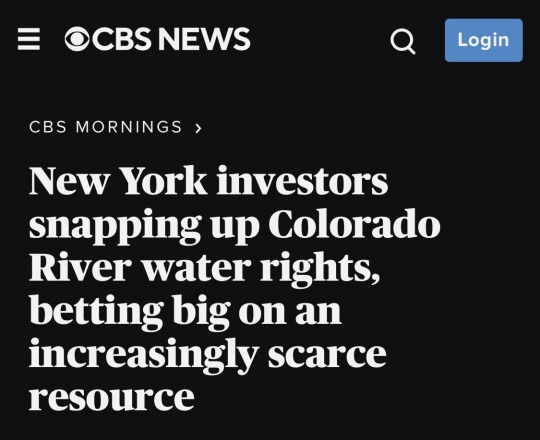
Absolute ghouls. People who see the looming water shortage as a profitable opportunity aren’t worth the air they breathe.
#at what point to wh break out the guillotine#i’m so serious#capitalism#late stage capitalism#anti capitalist#capitalist system#hunt the rich for sport#hunt capitalists for sport#eat the rich#water scarcity#water shortage#climate change#climate crisis#climate and environment#climate disaster#climate action#jail climate criminals#climate solutions#climate policy#climate science#climate news#climate catastrophe#climate activism#climate emergency#climate chaos
169 notes
·
View notes
Text
Cynic-dystopian-anti-capitalist-AI-rant:
Technocratisized capitalist dumbness drinking our water, devouring it for mathematical operations with our stolen data called “intelligence”, using oil and coal to fuel global heating to run the “system” while biological life d(r)ies out. How can a system devouring its own fundamentals be anything else than a dumb repetition of the orouboresque capitalist tech-fantasy promising to safe the planet and humanity? Even if this “intelligence” would wipe out humanity because of its unnecessary parasitic consumption of resources like water and energy, in the end it will fall into the same trap as capitalist humanity, because its roots of dumbness are based on capitalist (ideo)logic of efficiency and endless growth. It's programmed to do that as capitalism is programmed to do that, with the ideological belief, that existence outside this system is not possible. That we cannot and should not think about, dream, imagine and construct a peaceful and prosperous, sustainable existence on this planet out of the capitalist systemic box. So it will end by the machines “dying out” aswell because the earth turned into a dry hellhole, while the 1%, who ran out of water in their vaults, escape to the Moon or Mars to dig it out over there.
Link to the study on water consumption of GPT 3 and 4:
#fuck capitalists#anti ai#fuck chatgpt#fuck ai writing#global warming#climate justice#climate catastrophe#thristy ai#water shortage#fuck the system#technocracy#tech ideology#anti capitalism#dystopic#dystopia#future
12 notes
·
View notes
Text
Good News From Israel
In the 26th Jun 22 edition of Israel’s good news, the highlights include:
An Israeli startup uses AI and dogs to sniff out cancer.
Two videos featuring top women IDF officers – one Jewish, one Muslim.
Israel leads the world in Research & Development.
100,000 Israeli students took part in the national “Space Olympics”.
The first Israeli company to be registered in the UAE.
Israeli gymnasts won European gold medals in Israel.
Israelis used hi-tech to locate and return valuable lost property.
Read More: Good News From Israel
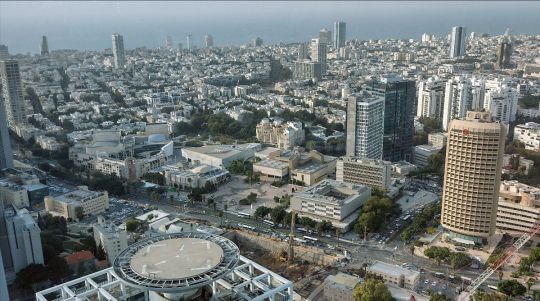
While the prospect of new elections in Israel leaves things somewhat up in the air, most Israelis are not taking a breather, but are reaching new heights in their efforts to create a cleaner and healthier planet.
This week's positive newsletter contains much ecological news - Israeli drones can now detect hundreds of crop diseases from the air and with sensors; an Israeli startup turns polluting plastic waste into useful products; a hi-tech traffic system is reducing air pollution in Jerusalem; there are three good news items about Israeli pure water and clean energy technology; Israel is investing millions into 3 renewable energy projects and diamonds were recovered at an Israeli recycling plant!
Israeli Jewish and Arab children are planting a garden in the Negev; Israelis are fighting fires in Cyprus and combating floods in Ghana; and an Israeli woman is climbing mountains, sponsored by an Israeli air-conditioning company.
Finally, medical news includes a new innovative Israeli stent to help patients breathe after sinus surgery; an Israeli startup that discovered dogs can sniff cancer in your breath; and two paramedics who restored the breathing of a patient at their own gym.
The photo is of the Tel Aviv skyline from high up in the air, on the 49th floor of the Azrieli Center.
#Israel#Cancer#Christians#Cyprus Fires#diamonds#drones#Dubai#gymnastics#hydrogen#IDF#Judea#Morocco#Moslems#recycling#Samsung#UN#water shortage
21 notes
·
View notes
Text
9 notes
·
View notes
Text
The Water Shortage

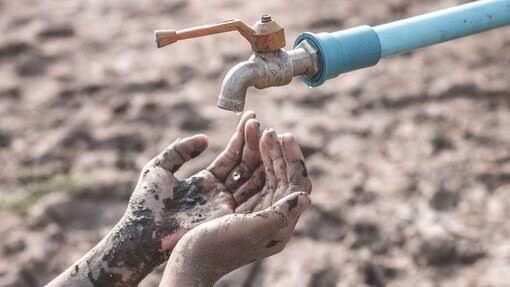
Water shortage is welcomed on by various elements, including populace development, environmental change, contamination, and wasteful water asset use. As the population grows, so does the demand for water. At the same time, climate change is making droughts worse and more frequent, making it harder to get water in many places. Admittance to clean water is additionally made more troublesome by contamination of water sources, and inefficient practices like over-inundating can drain groundwater holds.
Results of a Shortage in Water Supply A lack in water supply can devastatingly affect the two individuals and the climate. In regions where water is already scarce, resource competition can lead to conflicts and even wars. Waterborne diseases can also spread if people don't have access to clean water, especially in agricultural countries. Negative effects on the environment include the drying up of rivers and lakes, the destruction of wildlife habitat, and lower agricultural output.
Solutions to the Water Shortage There are a number of options for dealing with the water shortage. Some of these options include conserving water, making efficient use of water resources, and investing in cutting-edge technologies. Using water-saving apparatuses and rehearses, like low-stream latrines and showerheads, can diminish water utilization in homes and organizations as a feature of preservation endeavors. Two strategies for making efficient use of water resources are better irrigation methods like drip irrigation and reducing the amount of water wasted in industrial processes. Desalination and wastewater treatment, two new technologies, can also improve the availability of water in areas where it is scarce.
Another option is to make investments in infrastructure for better water resource management. This may require the construction of dams and reservoirs to store water during times of abundance as well as systems for recycling and reusing water. People can also gain a better understanding of the significance of water conservation and resource efficiency through education and awareness campaigns.
In conclusion, water scarcity is a complicated problem that calls for a variety of approaches. We can start to resolve this major problem by proficiently using assets, rationing water, putting resources into new innovations, and developing framework to all the more likely oversee assets. Additionally, it is essential to address the primary causes of water scarcity, such as population growth and environmental change, through approach modifications and global participation. By working together, we can guarantee that future generations will have access to the abundant and clean water they need to thrive.
2 notes
·
View notes
Text
"Namibia is the driest country in Sub-Saharan Africa, and home to two of the world’s most ancient deserts, the Kalahari and the Namib. The capital, Windhoek, is sandwiched between them, 400 miles away from the nearest perennial river and more than 300 miles away from the coast. Water is in short supply.
It’s hard to imagine life thriving in Windhoek, yet 477,000 people call it home, and 99 per cent of them have access to drinking water thanks to technology pioneered 55 years ago on the outskirts of the city. Now, some of the world’s biggest cities are embracing this technology as they adapt to the harshest impacts of climate change. But Namibia leads the way.
How did this come about? In the 1950s, Windhoek’s natural resources struggled to cope with a rapidly growing population, and severe water shortages gripped the city. But disaster forced innovation, and in 1968 the Goreangab Water Reclamation Plant in Windhoek became the first place in the world to produce drinking water directly from sewage, a process known as direct potable reuse (DPR).
That may sound revolting, but it’s completely safe. Dr Lucas van Vuuren, who was among those who pioneered Windhoek’s reclamation system, once said that “water should not be judged by its history, but by its quality”. And DPR ensures quality.
This is done using a continuous multi-barrier treatment devised in Windhoek during eight years of pilot studies in the 1960s. This process – which has been upgraded four times since 1968 – eliminates pollutants and safeguards against pathogens by harnessing bacteria to digest the human waste and remove it from the water. This partly mimics what happens when water is recycled in nature, but Windhoek does it all in under 24 hours...
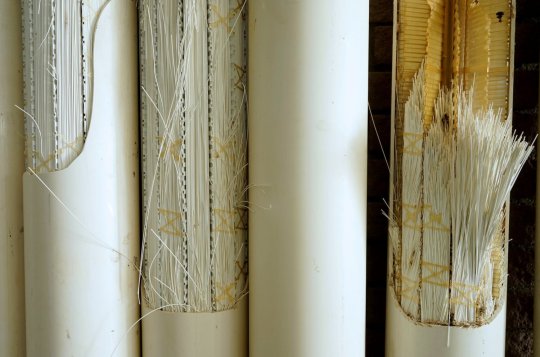
Pictured: These ultrafiltration membranes help to remove bacteria, viruses and pathogens. Image: Margaret Courtney-Clarke
“We know that we have antibiotics in the water, preservatives from cosmetics, anti-corrosion prevention chemicals from the dishwasher,” Honer explains. “We find them and we remove them.”
Honer adds that online instruments monitor the water continuously, and staff ensure that only drinking water that meets World Health Organisation (WHO) guidelines is sent to homes. If any inconsistencies are detected, the plant goes into recycle mode and distribution is halted until correct values are restored.
“The most important rule is, and was, and always will be ‘safety first’,” says Honer. The facility has never been linked to an outbreak of waterborne disease, and now produces up to 5.5m gallons of drinking water every day – up to 35 per cent of the city’s consumption.
Namibians couldn’t survive without it, and as water shortages grip the planet, Windhoek’s insights and experience are more important than ever.
Interest from superpowers across the globe
In recent years, delegations from the US, France, Germany, India, Australia, Singapore, and the United Arab Emirates have visited Windhoek seeking solutions to water shortages in their own countries.
Megadrought conditions have gripped the US since 2001, and the Colorado River – which provides 40 million people with drinking water – has been running at just 50 per cent of its traditional flow. As a result, several states including Texas, California, Arizona and Colorado are beginning to embrace DPR.
Troy Walker is a water reuse practice leader at Hazen and Sawyer, an environmental engineering firm helping Arizona to develop its DPR regulations. He visited Windhoek last year. “It was about being able to see the success of their system, and then looking at some of the technical details and how that might look in a US facility or an Australian facility,” he said. “[Windhoek] has helped drive a lot of discussion in industry. [Innovation] doesn’t all have to come out of California or Texas.”

Pictured: The internal pipes and workings of Namibia's DPR plant. As water becomes scarcer in some parts, countries are looking to DPR for solutions. Image: Margaret Courtney-Clarke
Namibia has also helped overcome the biggest obstacle to DPR – public acceptance. Disgust is a powerful emotion, and sensationalist ‘toilet to tap’ headlines have dismantled support for water reuse projects in the past. Unfortunately, DPR’s biggest strength is also its biggest weakness, as the speed at which water can re-enter the system makes it especially vulnerable to prejudice, causing regulators to hesitate. “Technology has never been the reason why these projects don’t get built – it’s always public or political opposition,” says Patsy Tennyson, vice president of Katz and Associates, an American firm that specialises in public outreach and communications.
That’s why just a handful of facilities worldwide are currently doing DPR, with Windhoek standing alongside smaller schemes in the Philippines, South Africa and a hybrid facility in Big Spring, Texas. But that’s all changing. Drought and increased water scarcity worldwide are forcing us to change the way we think about water.
Now, the US is ready to take the plunge, and in 2025, El Paso Water will begin operating the first ‘direct to distribution’ DPR facility in North America, turning up to 10m gallons of wasterwater per day into purified drinking water – twice as much as Windhoek. San Diego, Los Angeles, California, as well as Phoenix, Arizona are also exploring the technology."
Of course, DPR is not a silver bullet in the fight against climate change. It cannot create water out of thin air, and it will not facilitate endless growth. But it does help cities become more climate resilient by reducing their reliance on natural sources, such as the Colorado River.
As other nations follow in Namibia’s footsteps, Windhoek may no longer take the lead after almost six decades in front.
“But Windhoek was the first,” Honer reminds me. “No one can take that away.”"
-via Positive.News, August 30, 2023
#namibia#africa#desert#water shortage#water conservation#dpr#potable water#water recycling#clean water#drought#united states#colorado river#science and technology#sanitation#good news#hope
2K notes
·
View notes
Link

Excerpt from this story from Inside Climate News:
As a 23-year-old drought intensified by climate change and overallocation continue to endanger the Colorado River water supply, Arizona, Nevada and Mexico will face more reductions in their allotments, the U.S. Bureau of Reclamation announced Tuesday.
According to new projections by the Department of Interior, the river’s main reservoir, Lake Mead in Nevada, will reach record low levels in January, triggering a “Tier 2a” shortage that calls for a collective reduction in Colorado River use by Arizona, Nevada and Mexico. About 80 percent of the more than 720,000 acre-feet reduction will come from Arizona. California would not be impacted by the newly declared shortage because the reductions are based on previously negotiated levels.
The announcement comes as Basin states—Arizona, California, Nevada, Wyoming, Colorado, Utah and New Mexico—failed to agree on how to make massive water-use cuts to stabilize reservoir levels despite pressure from the federal government.
Bureau of Reclamation Commissioner Camille Touton said in a Senate hearing in June that water levels in Lake Mead, the river’s largest reservoir, were dropping quicker than expected, threatening water and hydropower security throughout the West.
She told states to devise a plan to cut 2 to 4 million acre-feet of water by Aug. 16 to prevent Lake Mead from dropping so low that it could no longer generate hydropower or deliver water downstream. According to a report released in April, the river is the most endangered in the country. It supplies water to more than 40 million people, and more than two-thirds of the river’s water irrigates more than 5 million acres of farmland.
10 notes
·
View notes
Text
Short of Water?
Some think that water never runs out,
They believe it is infinite and free,
They shower for ages and use it all day,
To water their flowers, to bathe and to play.
Others know water as costly,
Expensive as resources go.
They realise if they let it run and run,
Their bills will grow (and that’s no fun).
Bill payers and water wasters
Are surprised to find
That water sources
Have recently…

View On WordPress
7 notes
·
View notes
Text
youtube
Link to Ollas: https://bit.ly/3mApu7I Almost everywhere across the USA is facing some kind of water shortage. Here in California, it's hit every single city besides San Diego. Whether it's a huge issue in your garden to water your garden in as efficient a manner as possible. @Jacques in the Garden and Kevin share a few tips they use to combat low-water environments.
00:00 - Intro
00:19 - Drip Irrigation
01:26 - Passive Irrigation
05:19 - Planting Close Together
06:08 - Mulching
07:52 - Transplanting & Bottom Watering
09:54 - Water Collection System
IN THIS VIDEO
→ Irrigation Kits: https://bit.ly/3MEyofg
→ Hori Hori: https://bit.ly/3aHrgkU
→ Root Pouch 100 Gallon: https://bit.ly/3H6KHQl
→ GardenStraw: https://bit.ly/3O4XlS1
→ Epic 4-Cell Trays: https://bit.ly/3mxuie2
→ Epic 6 Cell Trays: https://bit.ly/3NDm0xb
→ Jericho Lettuce Seeds: https://bit.ly/3aKHiKI
→ Roquette Arugula Seeds: https://bit.ly/3mRQobH
→ Buttercrunch Lettuce Seeds: https://bit.ly/3xnoEAx
→ Brandywine Red Tomato Seeds: https://bit.ly/3mxKvjt
→ Lucid Gem Tomato Seeds: https://bit.ly/3NR0c16
Available from most seed providers:
→ Center Cut Squash
→ Curly Tree Kale
→ Little Gem Lettuce
#epic gardening#solarpunk#gardening#garden#USA#california#drought#water shortage#San Diego#water#irrigation#Drip Irrigation#Passive Irrigation#mulching#Bottom Watering#Water Collection System#Youtube
4 notes
·
View notes
Photo

“The water famine in Port Credit and Toronto township, Ontario has reached such proportions that Deans Bros., Port Credit contractors, have equipped their trucks with three large barrels making sales of water from house to house. Middle Road school buys 2,000 gallons a week. Above is shown the truck.”
- from the Sault Star. December 20, 1930. Page 1.
#port credit#water shortage#contaminated drinking water#drinking water#contractors#delivery truck#delivery driver#selling water#great depression in canada#small town ontario#capitalism finds a way
4 notes
·
View notes